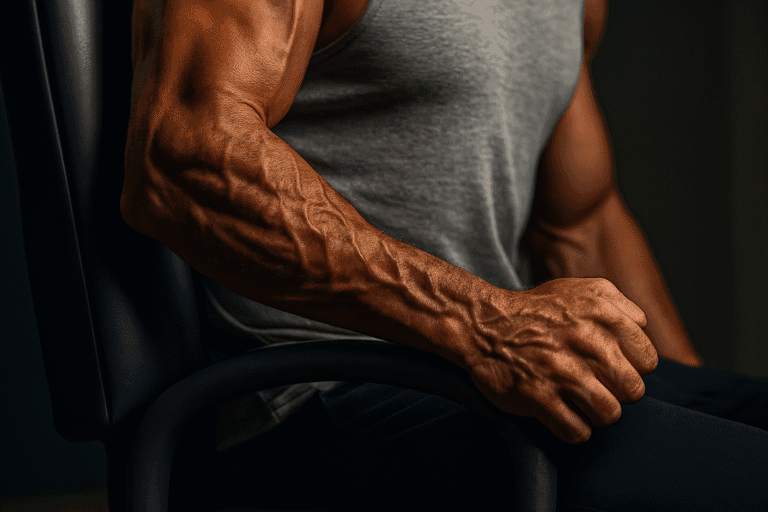FREE SHIPPING OVER $50
Push-Ups Are Overrated—These 3 Shoulder Moves Build More Strength, Says a Weightlifting Coach

The push-up is often touted as the ultimate, foundational upper-body exercise. It requires no equipment, hits the chest and triceps, and serves as a quick barometer of general fitness. However, when your primary goal shifts from basic fitness to building serious strength, power, and aesthetic shoulder width, the push-up quickly becomes overrated. While they are great for endurance, they simply don’t offer the focused stimulus required to maximize the strength and development of the deltoid muscles (shoulders).
As a weightlifting coach, my focus is on efficiency and targeted muscle growth. The reality is that if you want truly stronger shoulders that resist injury and look impressive, you need exercises that isolate and load the deltoids through their full range of motion. Therefore, I bypass the push-up for shoulder work entirely in favor of three specialized moves that build targeted strength in all three heads of the deltoid (anterior, medial, and posterior). By integrating these three fundamental exercises, you will rapidly see progress that generic push-ups simply cannot deliver.
Why Push-Ups Fall Short for Shoulder Strength
Before we dive into the superior moves, it’s important to understand the mechanical limitations of the push-up when it comes to shoulder strength.
The Chest and Triceps Steal the Show
A push-up is a horizontal pressing movement. While the anterior (front) deltoid is certainly active, the primary driving muscles are the chest (pectorals) and the backs of the arms (triceps).
- The Problem: The chest and triceps are typically much stronger and larger than the shoulders. This means they take over most of the work, allowing the deltoids to hit failure after the larger muscles are exhausted, limiting the specific stimulus needed for shoulder growth and specialization.
- The Goal: To build stronger shoulders, you need exercises where the deltoids are the prime mover and are forced to bear the maximal load.
The Lack of Overhead Power
The most fundamental test of shoulder strength is the ability to press a weight overhead. This requires coordination, stability, and power from the entire deltoid complex and the rotator cuff.
- The Deficit: Push-ups train horizontal pushing, which is fundamentally different from the vertical pushing mechanics needed for carrying groceries overhead, lifting a child, or simply performing a shoulder press. To gain vertical strength, you must train vertically.
The 3 Moves That Build Superior Shoulder Strength
These three exercises are the foundation of any serious shoulder program. They ensure every head of the deltoid is hit with appropriate load and movement patterns, leading to balanced strength and reduced injury risk.
1. The Dumbbell Overhead Press (The Power Builder)
This is the gold standard for building pure strength and mass in the deltoids and is directly responsible for the wide, powerful look of the shoulders.
- Target: Primarily the anterior (front) and medial (side) deltoids.
- Technique: Perform this either seated (for core stability and increased focus on the shoulders) or standing (for greater core engagement). Start with dumbbells at shoulder height, palms facing forward. Press the weights straight up until your arms are fully extended overhead. Lower the weights back down slowly and under control.
- Coaching Tip: Use a weight that allows you to complete 6 to 10 repetitions with good form. This focuses on the low rep range required for maximum strength and hypertrophy.
2. The Dumbbell Lateral Raise (The Width Maker)
This move is essential because it targets the medial deltoid head, which is largely ignored by push-ups and even the overhead press. The medial deltoid is what gives the shoulder its width and cap-like appearance.
- Target: Exclusively the medial (side) deltoids.
- Technique: Stand tall with a dumbbell in each hand, arms relaxed at your sides. Keeping a slight bend in your elbow, lift the dumbbells out and up to the side until your arms are parallel to the floor (about shoulder height). Crucially, pause at the top for a second to ensure peak contraction, then lower slowly.
- Coaching Tip: Use a lighter weight than you think. The medial deltoid is smaller. The effectiveness of this exercise comes from control, isolation, and time under tension, not heavy lifting. Avoid swinging the weights by keeping your core tight.
3. The Face Pull (The Injury Preventer)
This is the most neglected exercise in most fitness routines, yet it is the most critical for shoulder health, posture, and balancing out all the pushing movements (like the push-up and overhead press).
- Target: The posterior (rear) deltoids and the upper back muscles (rotator cuff and traps).
- Technique: Use a rope attachment on a cable machine (or resistance band anchored to a high point). Pull the rope toward your face, aiming your hands toward your ears. Focus on squeezing your rear deltoids and upper back together powerfully, keeping your elbows high.
- Coaching Tip: Perform this exercise for high reps (12 to 15) and focus entirely on the muscle contraction. Strong rear deltoids pull the shoulders back, directly improving your posture and preventing the common “rounded shoulder” look caused by too many push-ups.
The Weightlifting Coach’s Strategy: Integrating These Moves
To maximize strength and minimize injury, these exercises should be programmed strategically.
Focus on Movement Plane
- Vertical Push: Use the Dumbbell Overhead Press for heavy, low-rep work (6-10 reps) to build overall strength and mass.
- Lateral Isolation: Use the Lateral Raise for moderate-to-high reps (10-15 reps) to target width and isolation. Focus on strict form.
- Horizontal Pull/Balance: Use the Face Pull for high reps (12-20 reps) to balance the joint and improve long-term shoulder health.
The Rep-Range Principle
To build maximum strength and muscle, you need to use a variety of repetition ranges.
- Strength (6-10 reps): Best for the Overhead Press.
- Hypertrophy (10-15 reps): Best for the Lateral Raise.
- Endurance/Health (15-20 reps): Best for the Face Pull.
By using this combination, you stimulate all muscle fibers in the deltoid complex, leading to a more complete and robust development than any single exercise could achieve.
Beyond Aesthetics: Strength and Injury Prevention
The choice to prioritize these three moves over the push-up is not just about aesthetics; it’s about functional health and longevity in the gym.
Injury Resilience
The shoulder joint is inherently unstable, relying heavily on the smaller rotator cuff muscles for stability. The Face Pull is a specialized exercise that directly targets these often-neglected internal rotators and stabilizers.
- The Result: A balanced, strong shoulder complex is less prone to impingement and rotation issues, allowing you to train harder and longer without career-ending joint problems.
Real-World Power
The Dumbbell Overhead Press trains true vertical strength, which translates directly to powerful real-world movement.
- The Result: You will find that lifting items overhead becomes easier, and your ability to generate force from a stable core upward will be dramatically improved—a strength component the push-up simply does not address.
Conclusion
While the push-up holds its place as a fantastic bodyweight exercise for endurance, it is overrated for the dedicated purpose of building stronger, wider, and healthier shoulders. As a weightlifting coach, I confidently advise swapping out excessive push-ups for the three specialized moves. By prioritizing these targeted, specialized exercises, you will efficiently stimulate all three heads of the deltoid, finally achieving the strength and shoulder development you want.
Related Articles
- The #1 Exercise Strategy for Managing PCOS—And Why Most Women Do It Wrong
- Struggling With Balance? This 1 Daily Habit Could Keep You Steady for Life
- Fix Your Posture at Home With These 5 Back Moves—No Equipment Needed
- Sick of Chronic Migraines? These 6 Yoga Moves + Breathwork Could Be Your Natural Relief
- Trainers Swear By This 20-Minute Walk Trick to Melt Belly Fat Fast—No Gym Needed



